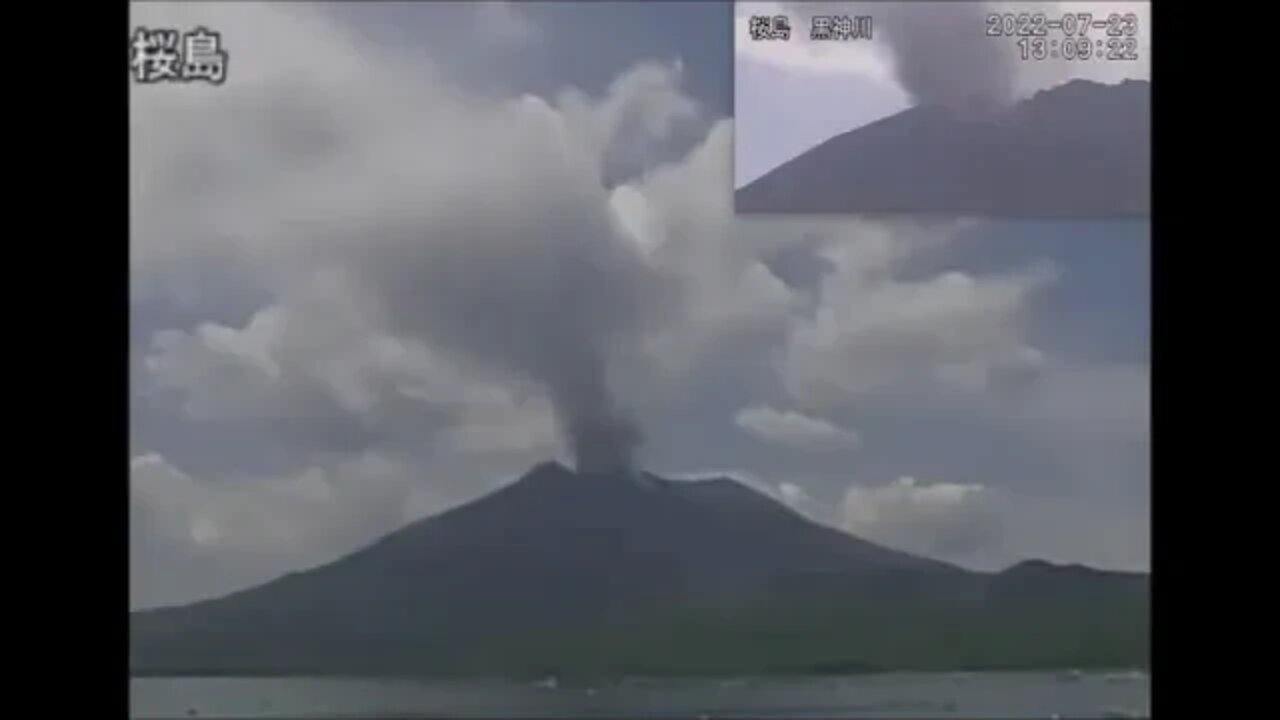Premium Only Content

Volcano in Japan Sakurajima erupts
Volcano in Japan Sakurajima erupts
Japan raised its emergency alert level to the maximum five and urged residents to evacuate after a volcanic eruption.
Sakurajima on western island Kyushu erupted at about 8.05pm local time today, the Japanese Meteorological Agency (JMA) said.
There were reports of volanic stones raining down at a distance of 2.5 km (1.5 miles) from the volcano, according to state broadcaster NHK.
The eruption alert level has been raised to 5, the highest, with some areas advised to evacuate, it added.
Nearby nuclear power plant Sendai saw no irregularities, regulators confirmed
The facility is just 31 miles northwest of Sakurajima.
At 10pm local time (2.30pm GMT) a Japanese government spokesperson told reporters the government had not heard of any damage from the eruption.
There were no immediate reports of damage.
Sakurajima is one of Japan's most active volcanoes and eruptions of varying levels take place on a regular basis. In 2019 it spewed ash 5.5 km (3.4 miles) high.
Video footage from Sunday's eruption showed what appeared to be a red mass flowing down one side of the volcano, with red projectiles shooting out while smoke, hard to see in the darkness, billowed up.
Most of the city of Kagoshima is across the bay from the volcano but further residential areas within about 3 km (1.9 miles) of the crater may be ordered to evacuate, NHK said.
Officials at Prime Minister Fumio Kishida's office were gathering information about the situation, it added.
The team analysed surface deformation in and around the caldera and volcano to characterise the magma supply conditions, and how they can be used for eruption forecasting and hazard assessment.
The magma build-up could see the volcano repeat its deadly eruption of 1914, which killed 58 people and caused widespread flooding in Kagoshima.
Aira caldera is a large, submerged crater in the southern part of Kyushu, Japan, caused by the violent explosion and subsequent collapse of Sakruajima's huge magma reservoir.
The deadly 1914 eruption was around 1.5 km cubed in volume. From now it would take roughly 130 years to save up enough magma for another eruption of a similar size, scientists warned.
In 2016 scientists led by Bristol University found that magma building up beneath Japan's Aira Caldera, caused by the Sakurajima volcano, may threaten Kagoshima, known as the 'Naples of the Eastern world', with 600,000 inhabitants.
-
 1:56:48
1:56:48
Tundra Tactical
4 hours ago $5.05 earnedFull Semi-Auto Comedy Hour
20.4K2 -
 2:07:31
2:07:31
The Connect: With Johnny Mitchell
13 hours ago $1.99 earnedSecrets Of The Cocaine Cowboys: Miami Drug Lord Reveals Truth About His BILLION-DOLLAR Coke Empire
16.7K1 -
 1:55:52
1:55:52
BlackDiamondGunsandGear
1 day agoGlocks Want Gun Control? // Trump Tramples on your Rights? // After Hours Armory
19.6K2 -
 1:55:52
1:55:52
DLDAfterDark
8 hours ago $0.91 earnedDLD Live! Trump - Flag Burning - Glock & Gun Control - Martial Law Light?? - After Hours Armory
12.7K1 -
 13:46:18
13:46:18
GritsGG
15 hours agoRumble Customs! 3515 Ws! 🫡!
84.8K -
 5:59:47
5:59:47
SpartakusLIVE
10 hours agoThe HUGEST Brain (not forehead) delivers Saturday SPARTOONS || Variety Later - Shadow of Mordor
186K4 -
 2:34:20
2:34:20
Barry Cunningham
11 hours agoPRESIDENT TRUMP WELCOMES FOOTBALL SEASON! AND MORE BREAKING NEWS!
80.4K51 -
 54:47
54:47
Side Scrollers Podcast
14 hours agoSide Scroller Presents KING OF THE KART | MASSIVE MARIO KART TOURNAMENT
46.8K1 -
 4:12:33
4:12:33
Mally_Mouse
14 hours ago🔥🍺Spicy HYDRATE Saturday!🍺🔥-- Let's Play: Baldur's Gate!
37.5K3 -
 2:26:32
2:26:32
BooniesHQ
10 hours agoGame Of SKATE Shaun Hover Vs. Jeff DeChesare: Boonies Skate Night 1
110K6